Photo
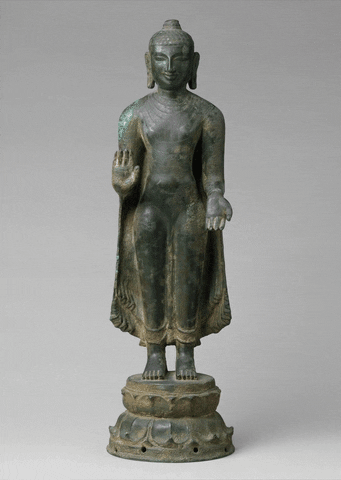
Celebrating Buddha Purnima with this GIF I've created using open images of Indian sculptures of Buddha from The Metropolitan Museum of Art. Find more Art GIFs on my @giphy channel: http://giphy.com/AruneshV
6 notes
·
View notes
Photo
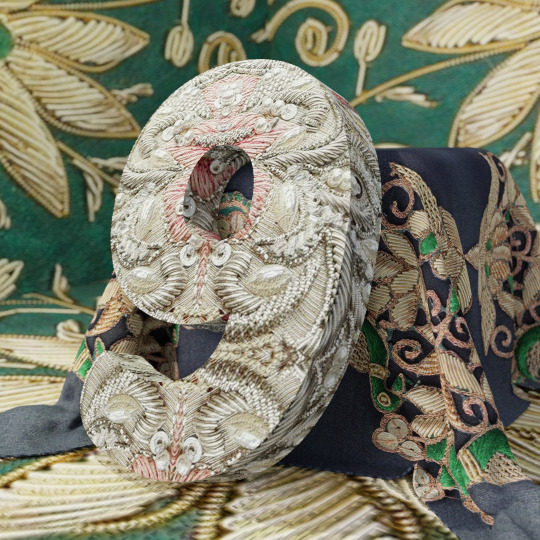
Day 36 at 36 Days of Type 08 with the number 9.
Tenth (and last) embroidery form - Zari Zardozi.
Zari Zardozi work is marked by its use of metallic threads along with sequins and beads on velvet, brocades and silks. This style of embroidery came to India from Central Asia in the 12th century. An ornate and sumptuous craft, it was mainly patronized by the Mughals.
Today, it has witnessed a popular revival and admired by the masses. This craft has major centers in Lucknow, Agra, Varanasi, Bhopal and Delhi. The zardozi craftsmen in Varanasi and Bareilly specialize in embroidering badges and ceremonial robes. These badges are commissioned by the Army, Navy and institutes including the European Catholic clergy who commission work on ceremonial robes.
#36days_9#36daysoftype#36daysoftype08#36days_textile#blender3d#blendercommunity#typography#lettering#incredibleindia#embroidery#textilesofindia#craftsofindia#lucknow#varanasi#agra#bhopal#delhi#uttarpradesh#madhyapradesh#zari#zardozi
1 note
·
View note
Photo
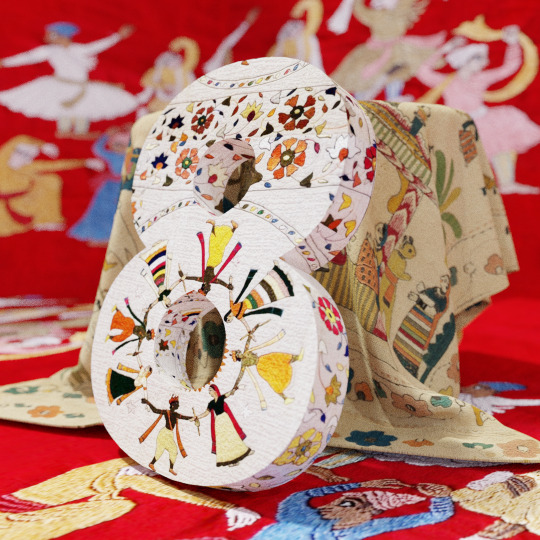
Day 35 at 36 Days of Type 08 with the number 8.
Ninth embroidery form - Chamba Rumal.
Chamba Rumal is an embroidered handicraft that was promoted under the patronage of the rulers of Chamba Kingdom in Himachal Pradesh. Due to its close relationship with the Pahari painting tradition, the Chamba
rumals are also called as ‘paintings in embroidery’.
Traditionally, the Chamba rumals were silk embroidered square pieces of handspun and handwoven unbleached mulmul. In recent years, artisans have been encouraged to reproduce earlier masterpieces in order to sustain the craft.
#36days_8#36daysoftype#36daysoftype08#36days_textile#blender3d#blendercommunity#typography#lettering#incredibleindia#embroidery#textilesofindia#craftsofindia#chamba#himachalpradesh
0 notes
Photo
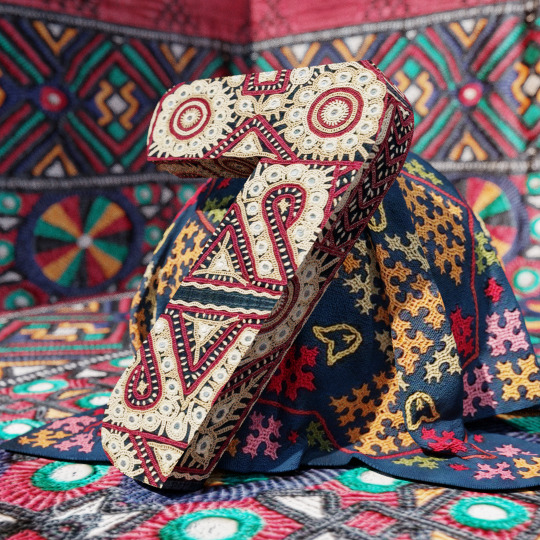
Day 34 at 36 Days of Type 08 with the number 7.
Eighth form of embroidery - from Kutch.
Kutch Embroidery is the textile signature art tradition of multiple tribal communities of Kutch district of Gujarat. The embroidery is generally done on fabrics of cotton, in the form of a net using cotton or silk threads. Also embellished with decorative elements such as mirrors and beads. The art form has now become a vocation for women of Kutch who have made a living out of this craft.
#36days_7#36daysoftype#36daysoftype08#blender3d#blendercommunity#typography#lettering#incredibleindia#embroidery#textilesofindia#craftsofindia#kutch#gujarat
1 note
·
View note
Photo

Day 33 at 36 Days of Type 08 with the number 6.
Seventh embroidery form - Toda.
Toda embroidery has its origins in Tamil Nadu. Locally known as “Pukhoor” meaning flower, this embroidery is an art work among the Toda pastoral people of the Nilgiri hills in TN. The embroidery adorns shawls. The shawl, called poothkuli, has red and black bands between which this embroidery is done.
#36days_6#36daysoftype#36daysoftype08#blender3d#blendercommunity#typography#lettering#incredibleindia#embroidery#textilesofindia#craftsofindia#toda#nilgiri#tamilnadu
2 notes
·
View notes
Photo
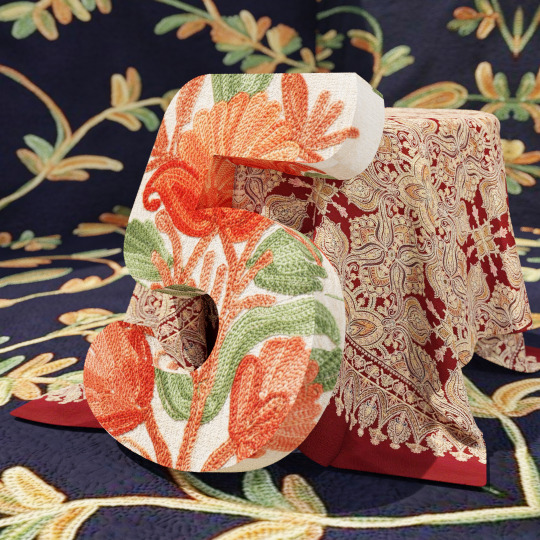
Day 32 at 36 Days of Type 08 with the number 5.
Sixth embroidery form - Kashidakari from Kashmir.
Kashmiri embroidery (also called Kashida) is used for phirans (woollen kurtas) and namdahs (woollen rugs) as well as stoles. It mostly draws inspiration from nature. Kashmiri embroidery is known for the skilled execution of a single stitch, often called the Kashmiri stitch. Seen here are the 'Aari' and 'Sozni' forms of the Kashmiri embroidery.
#36days_5#36daysoftype08#36daysoftype#blender3d#blendercommunity#typography#lettering#incredibleindia#embroidery#textilesofindia#craftsofindia
3 notes
·
View notes
Photo
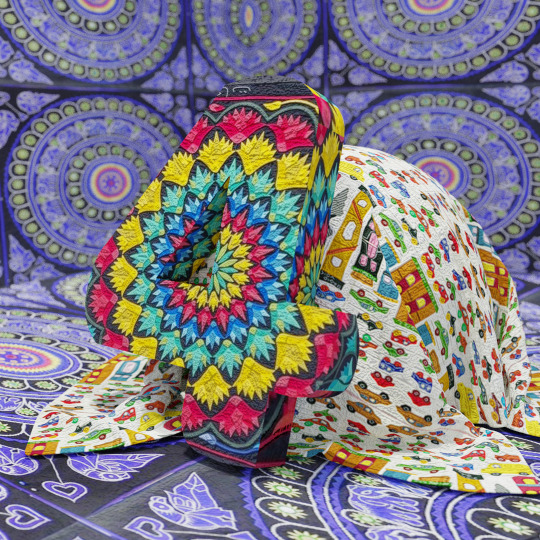
Day 31 at 36 Days of Type 08 with the number 4.
Fifth embroidery form - Appliqué.
Appliqué is a type of embroidery that employs a smaller patch or fabric to be applied or sewed onto a larger fabric or surface to create different designs and abstract patterns. The biggest variety of appliqué craftsmen are focused in Pipli near Puri, Odisha. It has evolved over the years to stay relevant in the contemporary times. Seen here is a blend of traditional and modern motifs of the art.
#36days_4#36daysoftype#36daysoftype08#blender3d#blendercommunity#typography#lettering#incredibleindia#embroidery#textilesofindia#craftsofindia#applique#pipli#odishatourism
0 notes
Photo
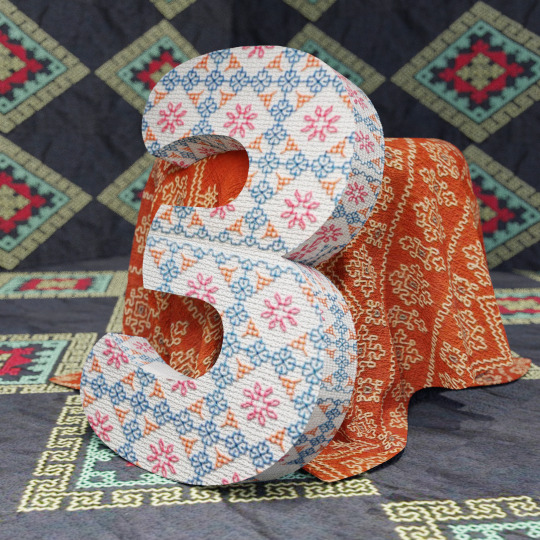
Day 30 at #36daysoftype08 with the number 3.
Fourth embroidery form - Kasuti.
Kasuti is a traditional form of folk embroidery practised in the state of Karnataka. Its history dates back to the Chalukya period. The patterns are stitched without using knots to ensure that both sides of the cloth look alike. One of the dwindling art forms but still manages to stay afloat today.
#36days_3#36daysoftype#36daysoftype08#blender3d#blendercommunity#typography#lettering#incredibleindia#embroidery#textilesofindia#craftsofindia#kasuti#kashida#karnataka
0 notes
Photo
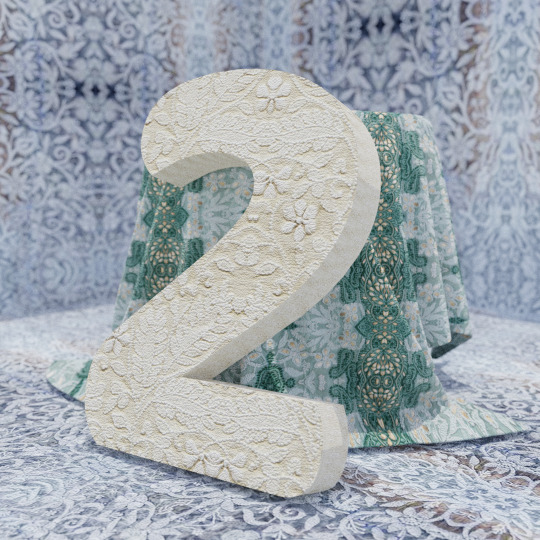
Day 29 at 36 Days of Type 08 with the number 2. Third embroidery form - Chikankari. The present form of Chikankari work is associated with the city of Lucknow. According to the most popular origin story, Chikan embroidery is believed to have been introduced by Noor Jahan, the wife of Mughal Emperor Jahangir. It started with the use of white thread on white muslin, fine cotton, or voile to showcase shadow work. Today, a variety of color variations are available, mainly in pastel shades.
#36days_2#36daysoftype#36daysoftype08#blender3d#blendercommunity#typography#lettering#incredibleindia#embroidery#chikankari#lucknow#uttarpradesh#noorjahan#jahangir#mughal#textilesofindia#pastelshades
0 notes
Photo

Day 28 at 36 Days of Type 08 with the number 1.
The second embroidery form - Kantha.
Kantha is perhaps the oldest form of Indian embroidery as it can be traced back to the 1st Century A.D. This needlework reuses old clothes such as sarees and dhotis and turns them into something new with a simple stitch. It is a form of embroidery often practised by rural women in the states of West Bengal, Tripura and Odisha.
#36days_1#36daysoftype#36daysoftype08#blender3d#blendercommunity#typography#lettering#incredibleindia#embroidery#kantha#bengal#odisha#textilesofindia#tripura
15 notes
·
View notes
Photo
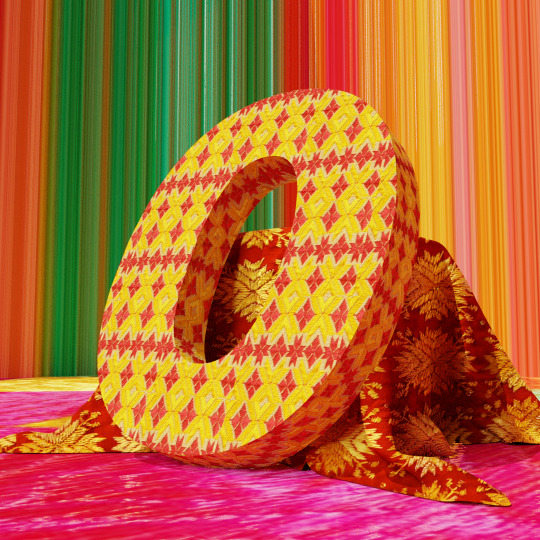
Day 27 at 36 Days of Type 08 with the first number 0. Starting the numbers with the theme 'Embroideries of India'. Will be focusing on realistic renders instead of animation for the upcoming days. The first one (or zeroth) is Phulkari. It is the most famous rural embroidery tradition of Punjab. It finds mention in the Punjabi folklore of ‘Heer Ranjha’ by Waris Shah. It uses a darn stitch done from the wrong side of the fabric using darning needles, one thread at a time, leaving a long stitch below to form the basic pattern. Beautiful, isn't it? ;)
#36days_0#36daysoftype#36daysoftype08#blender3d#blendercommunity#typography#lettering#incredibleindia#embroidery#phulkari#punjab#textilesofindia
0 notes
Video
Day 26 at 36 Days of Type 08 with the last alphabet Z. Tried to recreate the effect of multi-color tops that merge to form white while spinning. Something which we owned as kids. ;) Ft. motifs of jewellery and metal wares - mainly from Rajasthan and South India.
#36days_z#36daysoftype#36daysoftype08#animation#blender3d#blendercommunity#typography#lettering#type_matters#typetopia#designspiration#typeverything#artoftype#incredibleindia#jewellery
1 note
·
View note
Video
Day 25 at 36 Days of Type with the alphabet Y. Second last alphabet which includes motifs of jewellery and metal wares - mainly from Rajasthan and South India.
#36days_y#36daysoftype#36daysoftype08#animation#blender3d#blendercommunity#typography#lettering#type_matters#typetopia#designspiration#typeverything#typographyinspired#artoftype#incredibleindia#jewellery
0 notes
Video
Day 24 at 36 Days of Type 08 with the alphabet X. The last three alphabets include motifs of jewellery and metal wares - mainly from Rajasthan and South India.
#36days_x#36daysoftype08#36daysoftype#animation#blender3d#blendercommunity#typography#lettering#type_matters#typetopia#designspiration#typeverything#letteringco#typographyinspired#artoftype#incredibleindia#jewellery
0 notes
Video
Day 23 at 36 Days of Type 08 with the alphabet W. W for a wasted opportunity yesterday. 😛 Last set of design motifs from Buddhist and Jain temples in India.
#36days_w#36daysoftype#36daysoftype08#animation#blender3d#blendercommunity#typography#lettering#type_matters#designspiration#typetopia#typeverything#calligritype#typographyinspired#typegang#showusyourtype#artoftype#incredibleindia#buddhism#jainism#templesofindia
0 notes
Video
Day 22 at 36 Days of Type 08 with the alphabet V, ft. design motifs from Buddhist and Jain temples in India. See them on my Twitter (at)AruneshV.
#36days_v#36daysoftype#36daysoftype08#animation#blender3d#blendercommunity#typography#lettering#type_matters#typetopia#designspiration#typeverything#letteringco#calligritype#typographyinspired#typegang#showusyourtype#artoftype#incredibleindia#buddhism#jainism#temples
0 notes
Video
Wait for it, till the end. 👉
Day 21 at 36 Days of Type 08 with the alphabet U.
Starting with new set of motifs from Buddhist and Jain temples in India.
See them on my Twitter (at)AruneshV.
#36days_u#36daysoftype08#36daysoftype#animation#blender3d#blendercommunity#typography#lettering#strengthinletters#type_matters#typetopia#designspiration#thedesigntip#typeverything#letteringco#calligritype#typespire#typographyinspired#typegang#showusyourtype#friendsoftype#artoftype#incredibleindia#buddhism#jainism#temples#mahavirjayanti
0 notes